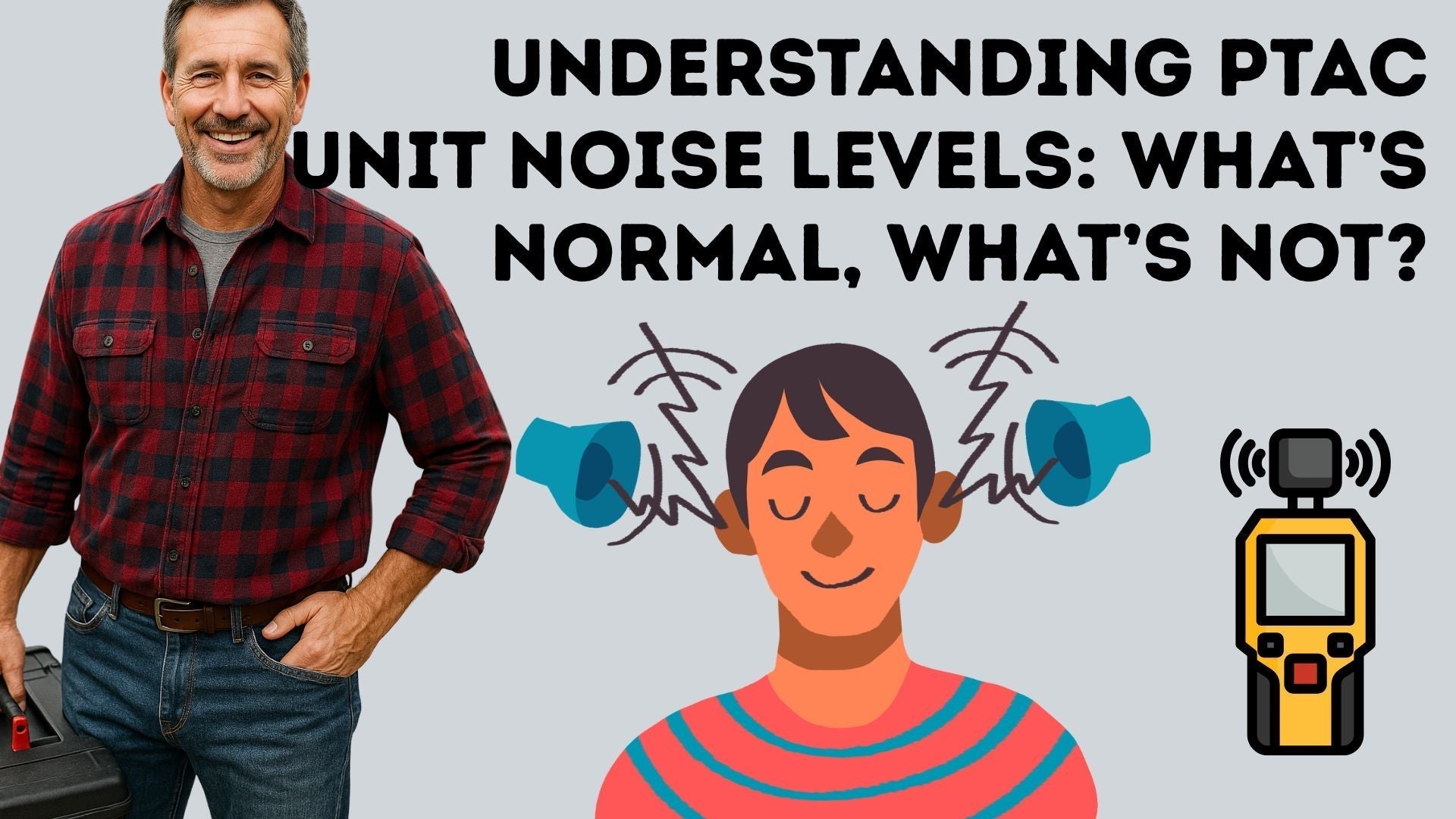What’s a Normal PTAC Sound?
If you’ve ever stayed in a hotel room with a Packaged Terminal Air Conditioner (PTAC), you’ve probably heard a low hum, a gentle whoosh, or even a brief click when it kicks on. These are all perfectly normal.
The Amana Distinctions 14,700 BTU PTAC with 3.5kW electric heat is known for quieter operation, but like all PTACs, it still makes some noise. Let’s break down what you should—and shouldn’t—hear.
Common Normal PTAC Noises
-
Low Hum: The compressor and fan running in normal operation.
-
Clicking: The thermostat calling for heating or cooling.
-
Soft Whoosh: Air movement as the fan ramps up or down.
-
Drip Sounds: Condensation water draining or evaporating.
According to ASHRAE’s HVAC Acoustics Guide, acceptable PTAC sound levels in hotels range between 35–55 decibels (about as loud as a quiet conversation or soft background music).
What’s NOT Normal?
If you're hearing these, it’s time to investigate:
-
Rattling or Vibrating: Could mean loose panels, fan blades, or internal parts.
-
Grinding or Screeching: Motor bearings may be failing. Shut it down immediately.
-
Loud Buzzing: Electrical issues, possibly from the capacitor or control board.
-
Booms or Banging: Expansion noises or something obstructing airflow.
🔗 HVAC.com – Troubleshooting PTAC Unit Noise
Quick Fixes for Common PTAC Noise
Here are some field-tested steps to take before calling a tech:
-
Tighten the grille or cover panel
-
Vacuum or replace the air filter – Clogged filters make the fan work harder (and louder)
-
Level the unit – An uneven install can cause vibration and humming
-
Clean the fan and coil – Dust and debris on the blower or coil can amplify noise
-
Check the wall sleeve and insulation – Poor sealing can amplify vibration
🔗 U.S. DOE – PTAC Maintenance Tips for Noise Reduction
When to Call a Pro
If the noise:
-
Gets worse over time
-
Is loud enough to disturb sleep or guests
-
Happens during startup and shutdown cycles
-
Comes with performance issues (poor airflow or temp swings)
…it’s probably time to call in an HVAC technician. PTACs are easy to work with, but compressors and motors aren’t a DIY job.
Final Tips from Mike
You don’t have to live with a noisy PTAC. Most of the time, it’s something small—loose screws, a dirty fan, or clogged filter. But when it’s not, don’t ignore it. A grinding sound today could be a blown motor next week.
The Amana 14,700 BTU PTAC is built to run reliably and quietly—but even the best unit needs a little attention. Stay on top of noise early, and you’ll avoid costly breakdowns later.
In the next topic you will read: How to Extend the Life of Your PTAC Unit: Mike’s Maintenance Game Plan







